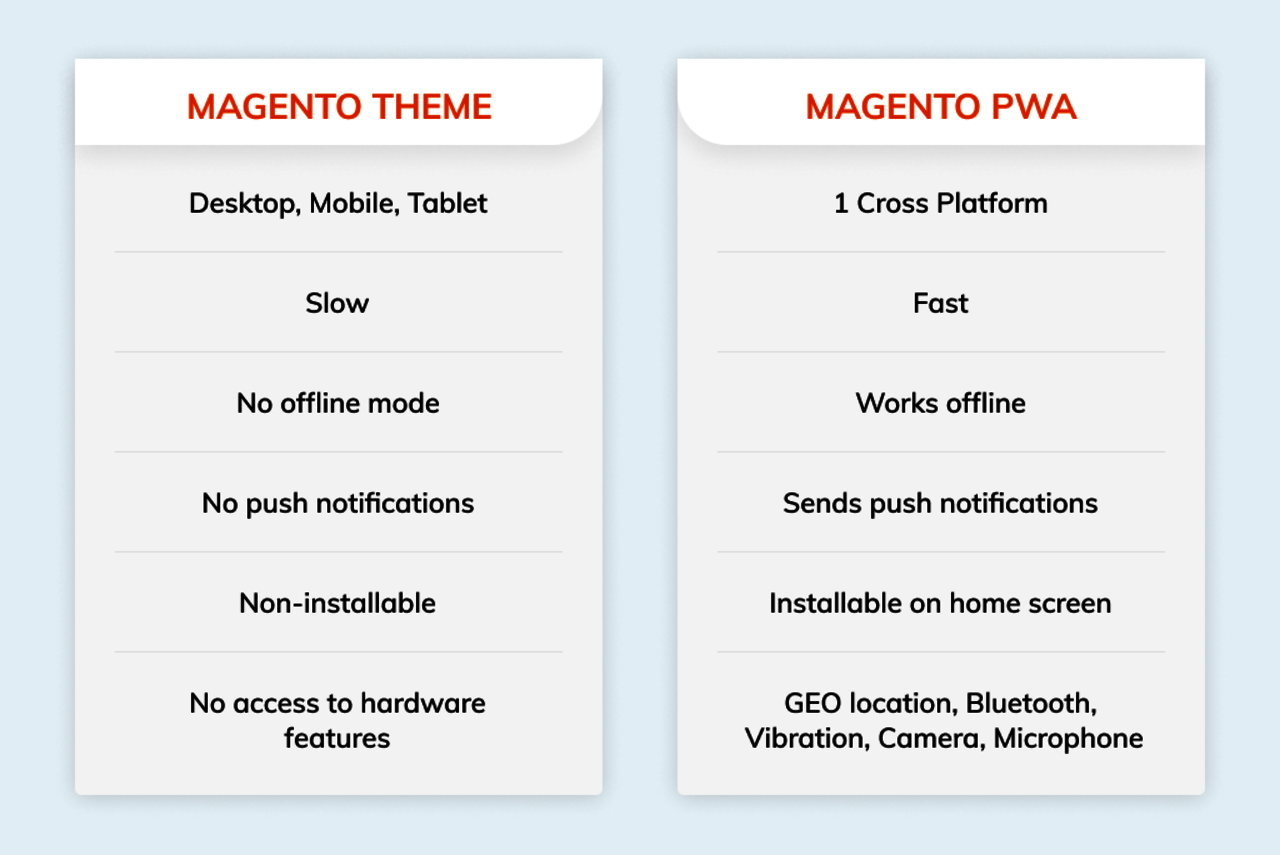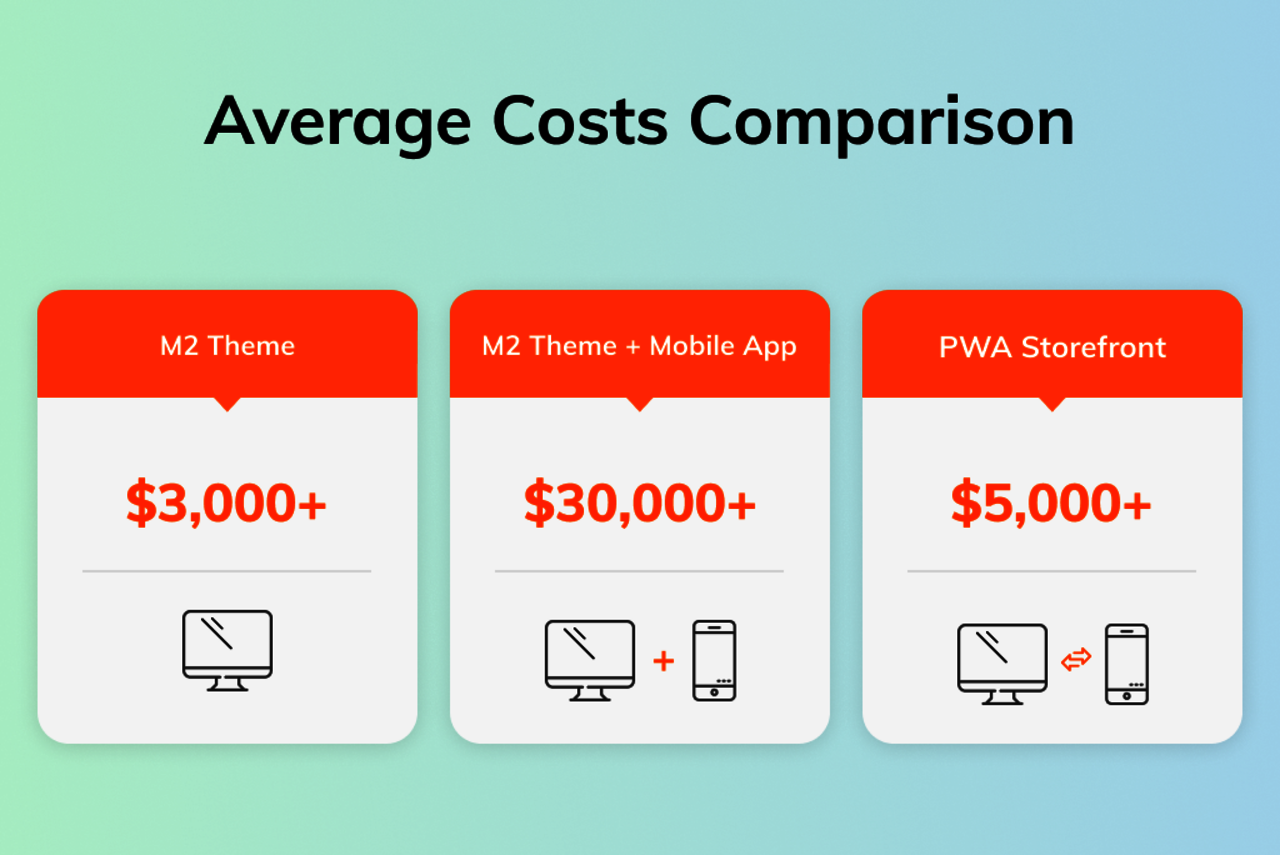
5 Myths and Facts About PWA Technology

If you were ever looking to improve your Magento (Adobe Commerce) store, there is a high chance that you considered progressive web applications, or PWAs, as an option. The lightning speed, SEO features and native-like appearance make it a compelling solution for e-commerce.
But, people have different opinions on PWAs. With so many experts praising and giving their accolades to the new frontend technology, there is a cohort of developers who are “up in arms” about it. The Magento community looks somewhat divided in that sense: sharing many views on PWAs but not reaching a consensus on whether they are a good fit for online stores.
As one of the first pioneers in PWA development on Magento, I feel like it’s my personal duty to point out the most common myths circling around this technology and set a clear picture of what it can do for e-commerce.
So, let's get the ball rolling and check what you know about the so-called headless approach.
Myth 1: PWA is another Magento theme
I've talked to a good number of business owners throughout my career as a PWA specialist. What has stuck out to me is that many of them mistake PWA for a "super fast" frontend theme. While the technology is known for its robust capabilities, PWAs are quite different from traditional Magento themes.
In reality, PWA is a storefront that incorporates a service worker and a manifest file. Most often, PWAs are developed as a headless solution that runs on a complex system of its own. If you go headless with PWA, your website will still run on the Magento backend (through an API), and all site data will be saved. However, the frontend would be completely independent of Magento, which opens a leeway of possibilities missing in the case of conventional themes

Besides the fact that users would be able to shop faster, PWAs empower your website with many unorthodox features such as push notifications, offline functionality, device responsiveness and app-like appearance.
PWAs are not bound to numerous extensions that you can find in the Magento marketplace. With PWA, you can develop any functionality that suits your business goals. The possibilities are endless.
Myth 2: PWAs are too expensive
All the marketing that puts PWA on the podium of the most futuristic solutions may lead you to an assumption that the technology comes with a high price tag.
But it depends ... it depends on how you choose to convert your Magento website to PWA.
You may follow two roads: (2) building a PWA from scratch or (2) using one of the PWA storefronts. The first option means developing a storefront yourself based on Magento PWA Studio. The downside is that it may take up to four months to implement basic functionalities and an additional several months to implement features tailored to your business goals.
The good news is that some Magento agencies offer PWA storefronts right out of the box. These storefronts are, sort of, templates also built via the Magento PWA Studio, but you won't need to expose your budget to a high amount of development costs. PWAs provide a plethora of ready-to-use features and integrations necessary for e-commerce operations.
Based on my observations, the average cost for a PWA storefront starts at $2,500 USD. Meaning, this is the price you pay for the stand-alone storefront itself. If you want to add custom functionality, the development costs may range from $2,000 for small companies to any imaginable sum of money for enterprise-level projects. PWAs are neither cheap nor expensive: it depends on the project size and agency rates.
Talking from personal experience, the average PWA project amounts to $10,000 USD, which is slightly more than developing a traditional Magento theme and three times less expensive than developing a full-fledged mobile app.

Myth 3: PWA is a raw technology
This one is somewhat true. The PWA ecosystem is still young, and, over the course of six years, few Magento stores have been quick to adopt the new technology. However, the more I talk with my Magento clients, the more questions I hear about PWAs. The interest is clear, the benefits are evident, the rise of PWA websites is imminent.
Why are merchants taking their time?
The question is open-ended, but I see a common misconception that PWA is a “raw technology”. Perhaps, not all customers are yet familiar with the concept of PWAs. They may feel confused if they see an "Add to Home Screen" prompt while browsing your website. The truth is: Customers may not even know that your website is a progressive web app. But, I'm sure that customers will appreciate a faster website with a better user experience.
When it comes to the technical base, the PWA is growing by leaps and bounds. Magento PWA Studio releases regular updates with new features and integrations. Many Magento extensions include a separate version compatible specifically for PWA. The Magento infrastructure is becoming more incorporated with PWA, and that trend shall continue.
Lastly, many e-commerce players have already jumped on the PWA bandwagon. Alibaba, Aliexpress, Flipcart, Lancome, Jumia — these are only a tiny fraction of companies who have hit the ground running with PWAs.
Yes, these are giants, and it might be unreasonable to compare to them. But massive organizations like these don't make spur-of-the-moment decisions. They must have done their research before moving to the new technology.
Myth 4: Hard to find a PWA developer
Finding a good Magento developer is a challenge, but finding a PWA developer may be a "mission impossible".
While this may have been true a few years ago, the situation is changing. PWA has caused quite a stir in the e-commerce industry, and whatever technology brings about turbulence in e-commerce also affects the job market.
Today, many web developers have retrained to become PWA specialists. With the rising demand for the new technology, we can see more programmers offering their services.
Also, some Magento agencies teach progressive web app stack to their existing developers, so the number of qualified specialists only keeps growing. Plus, developers are keen on discovering new technologies like React, Vue or Alpine – the Javascript frameworks used to create PWAs.
Myth 5: PWA is the future
And here comes the last one which is not really a myth.
PWA has indeed become more of a buzzword than a meaningful acronym. Media and aggressive advertisements have brought about so much hype around PWA that I sometimes myself think that it's an out-of-this-world phenomenon.
But there is nothing extraordinary about it. It's just another piece of technology that can contribute to better experiences online.
So is PWA the future?
No. It's the present, and it's more present than you may think. Who knows, maybe you are even reading this article on a PWA...
Final Thoughts
You should be seeing a ton of value in PWAs. The headless approach does fit the bill in light of mobile-first indexing, and Core Web Vitals updates coming this summer.
But it doesn't mean that the PWA is a one-size-fits-all solution. It's certainly not for everyone. If you adopt the new technology, you're bringing a revolution to your website. Not all Magento merchants are ready to make such a bold step.
So a PWA is your chance to stand out. It's a way to distinguish yourself from traditional Magento websites. This is true for now, at least, while the Magento community is still getting acquainted with the new, yet compelling, technology.






